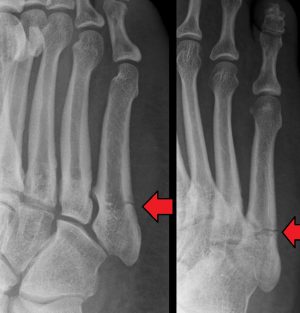
Jones fracture is a type of foot fracture that occurs at the base of the fifth metatarsal, which is the bone on the outer side of the foot that connects to the little toe. It is named after Sir Robert Jones, a Welsh orthopaedic surgeon who first described the injury in 1902.
A Jones fracture is considered a high-risk fracture because the blood supply to this area is poor, which can slow down the healing process and increase the risk of complications such as non-union (failure to heal) or delayed healing. Jones fractures are commonly seen in athletes who participate in sports that involve running, jumping, and quick changes of direction, such as basketball, soccer, and football. They may also occur as a result of trauma or overuse injuries.
Treatment for a Jones fracture typically involves immobilisation of the foot with a cast or walking boot for 6-8 weeks, followed by a period of rehabilitation exercises to restore strength and range of motion. In some cases, surgery may be necessary to stabilise the bone and promote healing. It is important to seek prompt medical attention if you suspect a Jones fracture, as early treatment can help prevent complications and promote a successful outcome.
